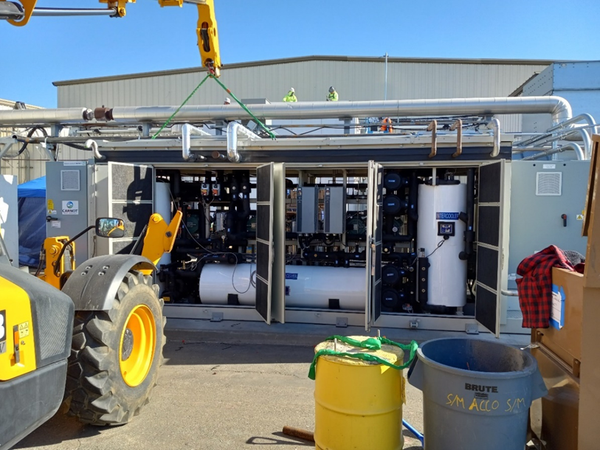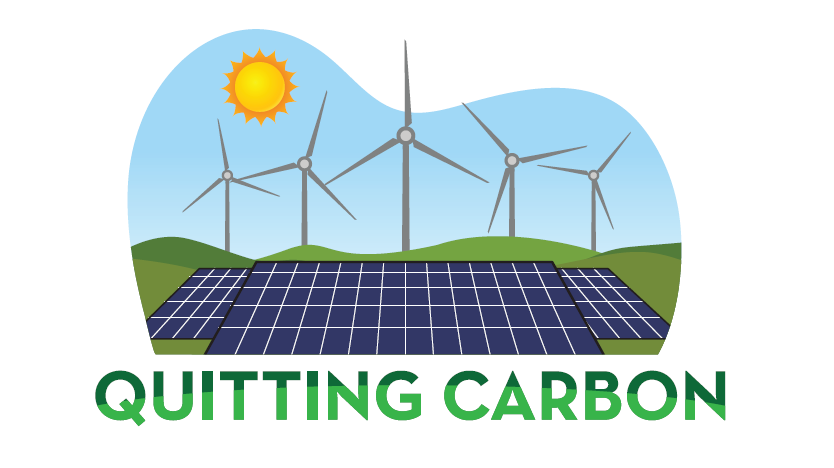What I’m reading: California is electrifying its fleets, rural counties benefit from renewables, good offshore wind news, and more

Quitting Carbon is a 100% subscriber-funded publication. To support my work, please consider becoming a paid subscriber or making a one-time donation.
Welcome back to another recap of highlights from what I’ve been reading.
Thanks, as ever, for reading and enjoy the weekend.
Fleets increasingly opting for electric trucks in California
Falling costs for lithium-ion batteries make going electric an easier choice – even for medium- and heavy-duty trucks. And in California, backed by incentives funded by the state’s cap-and-trade system, zero-emission trucks are gaining market share.
“Zero-emission vehicles (ZEVs) made up nearly 23% of new medium- and heavy-duty vehicle sales in California in 2024 – more than double the state’s target and the highest total of ZEV sales ever reported,” the California Air Resources Board (CARB) reported last month.
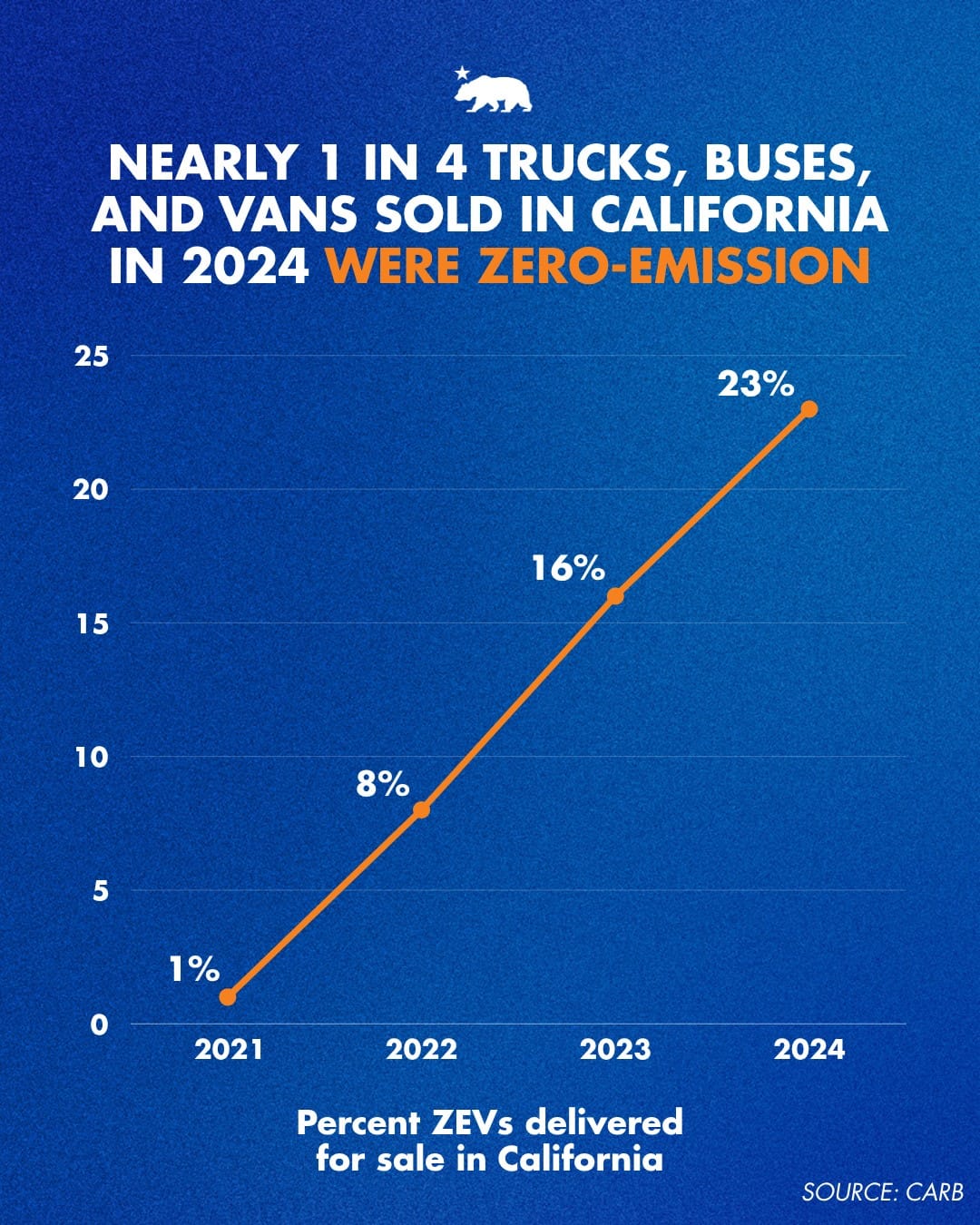
Shippers are taking advantage of incentives offered under CARB’s Clean Truck and Bus Vouchers program (HVIP) to add zero-emission trucks to their fleets.
“Over 15 years, HVIP has invested $820 million to deploy more than 10,500 clean vehicles across 2,000 fleets,” according to CARB. “Demand remains high with nearly $200 million in incentive funding requests submitted on the very first day applications opened this month.”
Writing at LinkedIn, Adam Browning, executive vice president for policy and communications with heavy-duty truck charging depot operator Forum Mobility, confirmed the surging interest in zero-emission trucks.
“California recently had an ZEV truck incentive window. Calstart just released the most recent HVIP data – and incentive vouchers were submitted for 892 Tesla Semis. That's over 80% of the total of all class 8s. And would more than double the total deployment of class 8s to date,” wrote Browning.
“The cost and performance characteristics have carriers excited. These will be deployed based on winning cost per mile over diesel. Zero emission freight is just getting started,” he added.
Impressive as those ZEV truck sales numbers are, the share of zero-emission passenger vehicles is higher still in California and just set a record as shoppers rushed to qualify for federal tax credits that expired at the end of September.
“Californians purchased 124,755 zero-emission vehicles (ZEVs) in the third quarter of 2025, representing 29.1% of new car sales, the highest quarterly sales share ever reported in California,” the Office of Governor Gavin Newsom (D) announced on Monday.

It will soon be easier for all those new EV drivers to find a – functioning! – place to charge now that the California Energy Commission adopted first-in-the-nation EV charger reliability and reporting standards and approved $10 million in grants to build more than 1,000 Level 2 EV charge points at low-income multi-family housing complexes across the state.
Rural counties cash in from renewables boom – when they allow projects
Rural counties are increasingly turning against solar and wind projects, which is a shame because the counties in farm and ranch country that have embraced renewables are reaping substantial benefits from the projects.
A USA Today investigation found that as of September 2025, about a quarter of U.S. counties had placed some form of restrictions on utility-scale wind or solar projects.
But in a dispatch from Randolph County, Indiana, published yesterday by the Indianapolis Star, reporters Sophie Hartley and Elizabeth Weise document how renewable energy development has “transformed this economically stalled county from corner to corner.”
Energy giant EDP Renewables North America operates solar and wind projects with a combined capacity of 698 megawatts in the county.
“When the years of negotiation are over and the last construction workers have left, what remains is money – serious money that can change a county’s trajectory,” write Hartley and Weise.
“In Randolph, millions of dollars have poured into school districts, emergency services, bridge repairs, streets, sidewalks and parks. EDPR NA is on track to pay the county over $65 million by 2038.”
“It’s easy for (communities) to get scared that they’re going to be overwhelmed by all this development. But a gigawatt or so of development isn’t a huge amount of land in most counties, and it can be really consequential for the residents,” David Adelman, a professor of law at the University of Texas, Austin, told Hartley and Weise.
How consequential?
In Benton County, the Caldwell Home senior living facility leased land for Indiana’s first wind farm in 2007.
“Now 12 turbines slowly churn away on the property, bringing enough revenue to cover 15% to 20% of the facility’s annual budget. The extra $80,000-plus a year allowed the home to install a new elevator, a new generator and repair the roof,” report Hartley and Weise.
“It changed how it felt around here. Everything was a little newer, a little less apt to breaking and needing repairs,” said Jay Davis, one of the home’s trustees.
Vertical floating solar comes to Germany
In my last roundup, I wrote about a Danish research project that confirmed the efficacy of vertical solar photovoltaic arrays installed between rows of crops. Now, a project installed on a lake at a gravel plant in Bavaria, Germany, claims to be the “world’s first” vertical floating PV power plant.
“With an installed capacity of 1.87 MW, an expected annual electricity production of around 2 GWh [gigawatt-hours] and coverage of just 4.65% of the lake's surface area, the plant achieves a previously unattained specific power density,” said SINN Power, a German solar project developer, in a press release last week.
“Its technical reliability has already been confirmed in the first few weeks of operation: the plant responds as planned to wind loads and water level changes. The gravel plant was able to reduce its power consumption from the grid by almost 60% during this period,” according to the company.
“Over the course of the year, the 2,600 PV modules are expected to reduce the gravel plant's power consumption by up to 70%.”
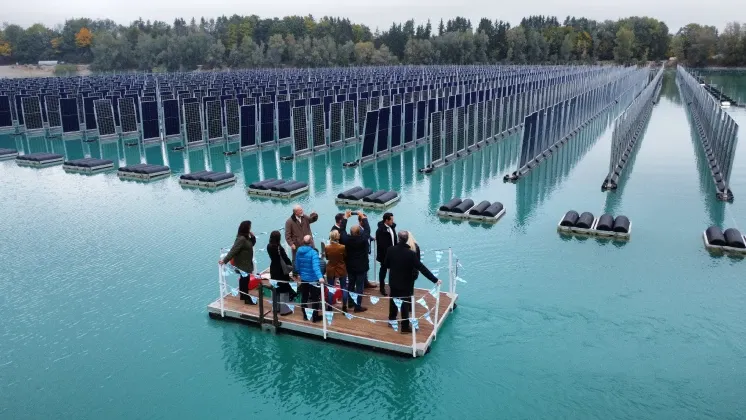
Some good offshore wind news
The second Trump administration is waging a war on the U.S. offshore wind industry, with the fate of even fully permitted projects very much uncertain. But there is good news to be found, despite the assault, in the progress achieved at two of the largest projects under construction and in California’s efforts to prepare for the future.
“Half the turbines at Vineyard Wind are generating electricity off Massachusetts, delivering a boost to the offshore wind industry as it struggles to navigate withering attacks by President Donald Trump,” Climatewire’s Ben Storrow reported earlier this month.
The 800-megawatt (MW) Vineyard Wind 1 project, a 50-50 joint venture between Avangrid Renewables and Copenhagen Infrastructure Partners, is in water 15 miles south of Martha’s Vineyard.
“Vineyard Wind continues to make progress and is delivering needed power to the New England grid, with a current capacity over 400 megawatts,” Vineyard Wind spokesperson Craig Gilvarg told Storrow.
At Dominion Energy’s 2,600MW Coastal Virginia Offshore Wind project, “First power will occur in Q1 of next year. And we are still on schedule to complete by late 2026,” utility spokesperson Jeremy Slayton told Canary Media’s Clare Fieseler last week.
“As of the end of September, Dominion had installed all 176 turbine foundations – ‘a big, important milestone,’ per Slayton. That accomplishment involved pile-driving 98 foundations into the soft seabed during the five-month stretch when such work is permitted,” wrote Fieseler.
On the West Coast, the California Energy Commission last week approved $42.75 million in grants for offshore wind port development. The five awards – Port of Long Beach ($20 million), Port of Oakland ($750,000), Port of Richmond ($750,000), Port of San Luis ($3 million), and Humboldt Bay Harbor District ($18.25 million) – are the first tranche of the $475 million in offshore wind port infrastructure funding authorized by Proposition 4, which was approved by California voters in November 2024.
State funding is especially welcome in Humboldt after the Trump administration in August withdrew a $427 million grant for the Harbor District’s planned Offshore Wind Heavy Lift Marine Terminal Project.
Local officials in Humboldt are determined to move forward on offshore wind.
“We’re full speed ahead. We’re absolutely focused, shoulder to the wheel, on building a modern heavy lift marine terminal here in Humboldt,” Harbor District Executive Director Chris Mikkelsen told the Lost Cost Outpost last month.
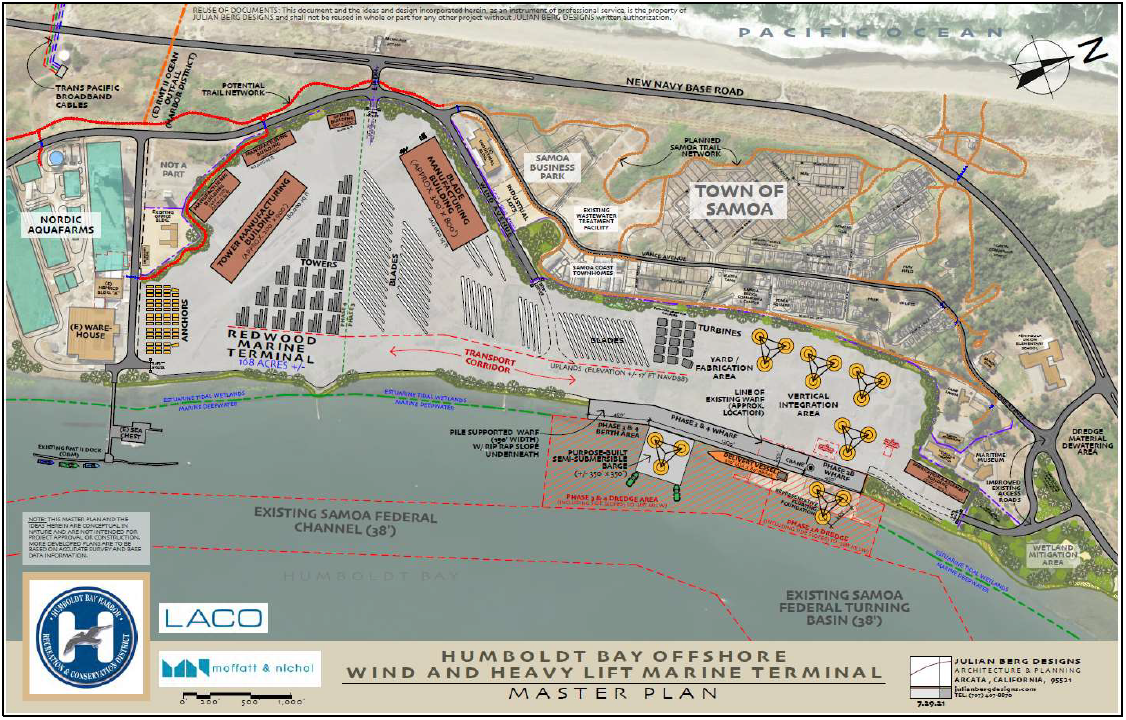
Bonus: Kids keep trying to save us
Young people frustrated by their elected leaders' unwillingness to more forcefully confront the climate crisis have in recent years turned to the courts for relief. That effort suffered another setback this week.
Twenty-two young people filed a lawsuit on May 29 alleging that three of President Trump's energy and environmental executive orders (14154, 14156, and 14261) are, in the words of Our Children’s Trust, a non-profit public interest law firm that co-filed the suit, "constitutional violations that directly harm the lives, health, and safety of American youth."
On Wednesday, a federal judge in Montana dismissed the lawsuit.
"Judge Dana L. Christensen wrote that he had 'reluctantly' made the decision, despite convincing evidence presented by the plaintiffs during a two-day hearing last month showing that the executive orders would hasten climate change and exacerbate risks to the plaintiffs’ health and safety," reported the New York Times' Karen Zraick.
"In the 31-page decision, Judge Christensen wrote that the plaintiffs in the case, Lighthiser v. Trump, lacked a legal basis to bring the suit, largely because the harms they described could not be ameliorated by a judicial decision. The suit was simply too broad in scope and too amorphous to be actionable, he said."
“The judge recognized that the government’s fossil fuel directives are injuring these youth but said his hands were tied by precedent,” Julia Olson, the founder of Our Children’s Trust and the lead lawyer for the plaintiffs, told Zraick.

